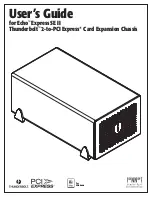
1-14
Cisco ASA Series CLI Configuration Guide
Chapter 1 Configuring Objects
Configuring Objects
Examples
The following example shows how to configure a security group object:
hostname(config)# object-group security mktg-sg
hostname(config)# security-group name mktg
hostname(config)# security-group tag 1
The following example shows how to configure a security group object:
hostname(config)# object-group security mktg-sg-all
hostname(config)# security-group name mktg-managers
hostname(config)# group-object mktg-sg // nested object-group
Configuring Regular Expressions
•
Creating a Regular Expression, page 1-14
•
Creating a Regular Expression Class Map, page 1-17
Creating a Regular Expression
A regular expression matches text strings either literally as an exact string, or by using
metacharacters
so that you can match multiple variants of a text string. You can use a regular expression to match the
content of certain application traffic; for example, you can match a URL string inside an HTTP packet.
Guidelines
Use
Ctrl+V
to escape all of the special characters in the CLI, such as question mark (?) or a tab. For
example, type
d[Ctrl+V]?g
to enter
d?g
in the configuration.
See the
regex
command in the command reference for performance impact information when matching
a regular expression to packets.
Note
As an optimization, the ASA searches on the deobfuscated URL. Deobfuscation compresses multiple
forward slashes (/) into a single slash. For strings that commonly use double slashes, like “http://”, be
sure to search for “http:/” instead.
group-object
group_id
Example:
hostname(config-network)# group-object
Engineering_groups
Adds an existing object group under this object group. The nested
group must be of the same type.
Step 3
description
text
Example:
hostname(config-protocol)# description New
Group
(Optional) Adds a description. The description can be up to 200
characters.
Command
Purpose
Summary of Contents for 5505 - ASA Firewall Edition Bundle
Page 28: ...Glossary GL 24 Cisco ASA Series CLI Configuration Guide ...
Page 61: ...P A R T 1 Getting Started with the ASA ...
Page 62: ......
Page 219: ...P A R T 2 Configuring High Availability and Scalability ...
Page 220: ......
Page 403: ...P A R T 2 Configuring Interfaces ...
Page 404: ......
Page 499: ...P A R T 2 Configuring Basic Settings ...
Page 500: ......
Page 533: ...P A R T 2 Configuring Objects and Access Lists ...
Page 534: ......
Page 601: ...P A R T 2 Configuring IP Routing ...
Page 602: ......
Page 745: ...P A R T 2 Configuring Network Address Translation ...
Page 746: ......
Page 845: ...P A R T 2 Configuring AAA Servers and the Local Database ...
Page 846: ......
Page 981: ...P A R T 2 Configuring Access Control ...
Page 982: ......
Page 1061: ...P A R T 2 Configuring Service Policies Using the Modular Policy Framework ...
Page 1062: ......
Page 1093: ...P A R T 2 Configuring Application Inspection ...
Page 1094: ......
Page 1191: ...P A R T 2 Configuring Unified Communications ...
Page 1192: ......
Page 1333: ...P A R T 2 Configuring Connection Settings and QoS ...
Page 1334: ......
Page 1379: ...P A R T 2 Configuring Advanced Network Protection ...
Page 1380: ......
Page 1475: ...P A R T 2 Configuring Modules ...
Page 1476: ......
Page 1549: ...P A R T 2 Configuring VPN ...
Page 1550: ......
Page 1965: ...P A R T 2 Configuring Logging SNMP and Smart Call Home ...
Page 1966: ......
Page 2059: ...P A R T 2 System Administration ...
Page 2060: ......
Page 2098: ...1 8 Cisco ASA Series CLI Configuration Guide Chapter 1 Troubleshooting Viewing the Coredump ...
Page 2099: ...P A R T 2 Reference ...
Page 2100: ......







































